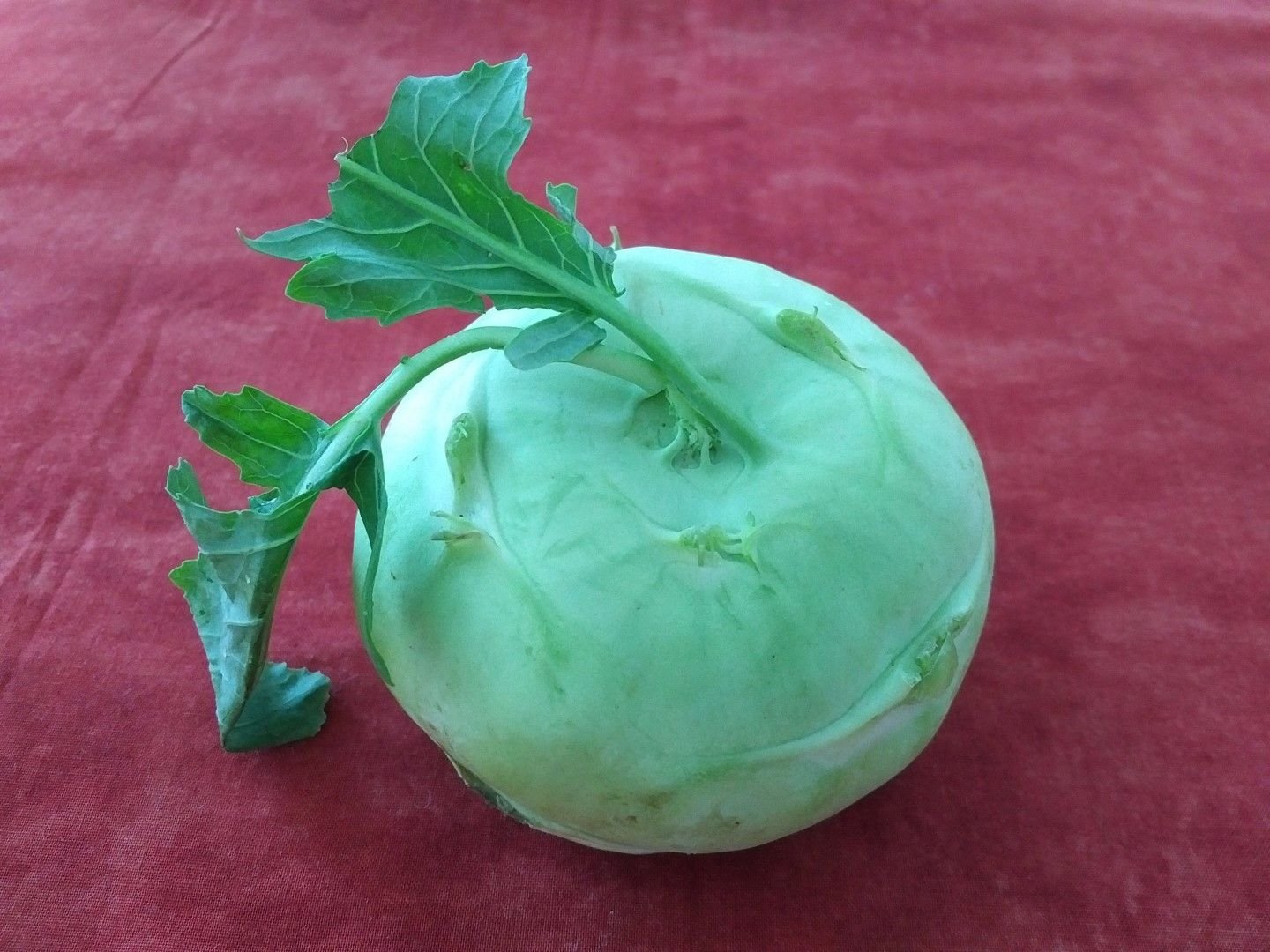Ever heard of the kohlrabi? Neither had I, until I started the Metabolic diet. It was among my very limited list of allowed vegetables, especially during the initial two weeks of my plan. Necessity is the mother of invention, as they say, so I armed myself with courage and went out to look for it. It was either this or eat radishes and onions every night! (Ok maybe not so bad, but it certainly felt that way!). To my amazement it was relatively easy to find, even at the local supermarket. But, what IS a kohlrabi?
What is a Kohlrabi?
Kohlrabis are vegetables of the cabbage family, and hence cousins of cabbage, broccoli, brussels sprouts, kale, cauliflower and collard greens. They come in three different colours but the most widely found one is light green/white. It resembles a turnip in shape and size, giving it its name. ‘Kohl’ means cabbage in German, and ‘Rübe’ (or Rabi) is a Swiss German variant of turnip. It is hence also known as the German turnip or turnip cabbage.
Kohlrabis have a pungent, sweet, slightly bitter flavour and are commonly used in cooking in Germany and other German-speaking northern European countries, as well as in a number of South East Asian nations. The harder outer layers are more fibrous so they are usually discarded, but the flesh inside is edible, as are the leaves. Kohlrabi can be consumed raw, especially in salads, but in my opinion it is best used cooked as it loses some of its pungency and slight bitterness. It is available year round, but at its peak in winter and spring.
The health benefits of Kohlrabi
As you might have guessed, being a member of such a healthy family, it is also full of health benefits. Kohlrabis are an excellent source of Potassium (350mg) and Calcium (24mg), and are rich in Vitamin C and folate. But the best part about the humble kohlrabi is that there are only 2.6 grams of sugar per 100grams, which means its G.I. index is very low, and remains low even after cooking.
In Traditional Chinese Medicine (TCM) it is widely recommended because:
- it helps with weightloss (only 2.5grams of sugar, remember!)
- it dries dampness (useful if you leave in a damp environment, especially in summer)
- it promotes blood circulation
- it improves Qi energy (vital energy)
- it is used to treat indigestion
- . it is used to treat blood sugar imbalances (for sufferers of both hypoglycaemia and diabetes)
- it helps reduce painful urination
- it is used as a remedy to stop bleeding of the colon
- it is used in juice form to stop nosebleeds
- it helps to detoxify the liver
How to incorporate it into your cooking
We’ve established that kohlrabi is a great ally when trying to lose weight or simply as part of a detox diet, but what can you do with it when you take it home from the supermarket? Personally, I like to see the Kohlrabi as a substitute for potatoes, which never usually make the “diet foods” list! Try it sliced and baked in the oven, to get crispy chips (see my recipe on page 60 of Anna’s Kitchen), or simply add it to soups as a thickener (as in the ‘Leek and Kohlrabi’ soup on page 14). I don’t discard the outer layer, after washing it and cutting it off, I save it to add flavour to broths (more of that in another blog post!).
Whatever you plan to do with it, even if you are just going to grate it for use in a salad, remember it’s worth trying everything at least once. It’s always good to expand your culinary horizons, especially when these take you to live a healthier life and in the process you might discover your next best favourite vegetable! Happy cooking!


